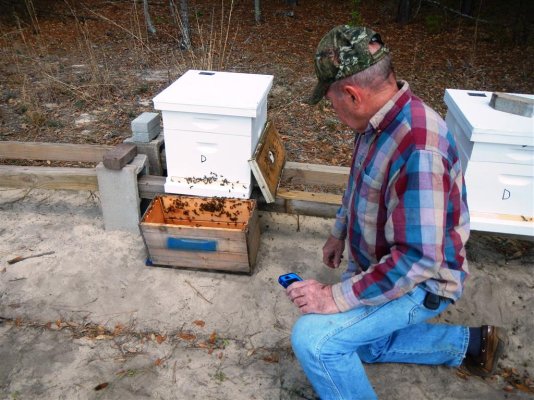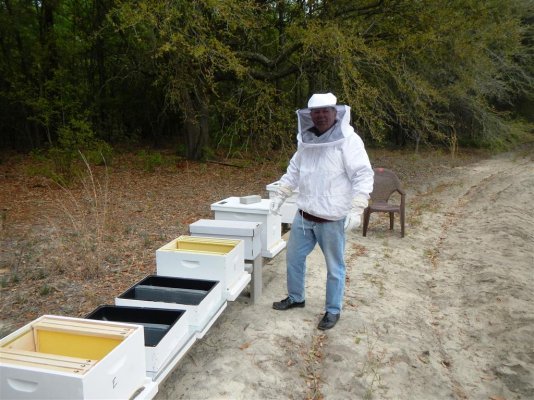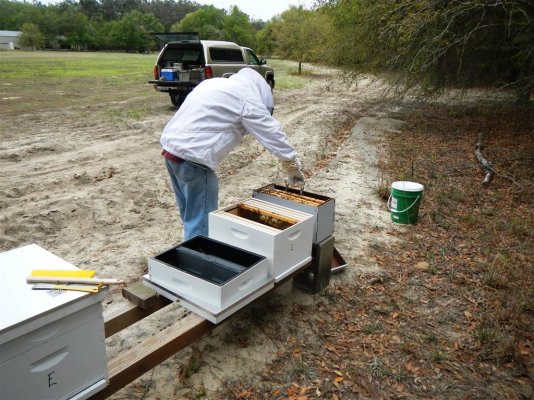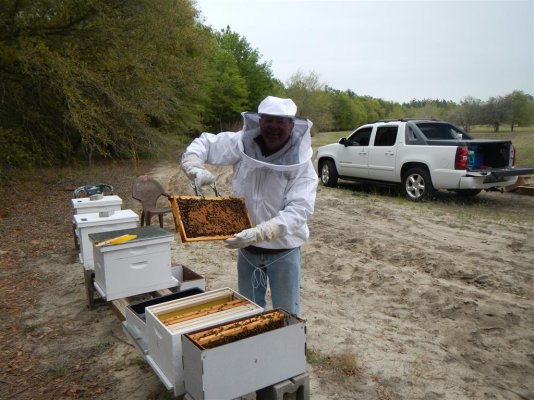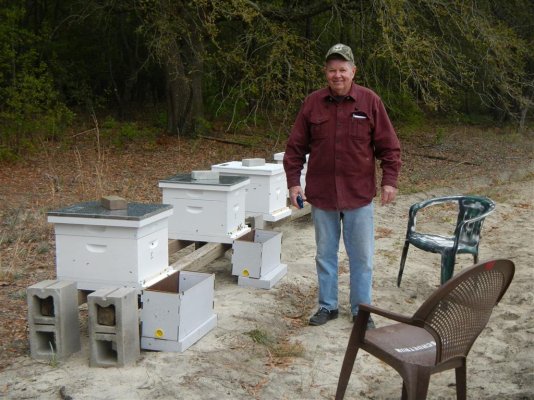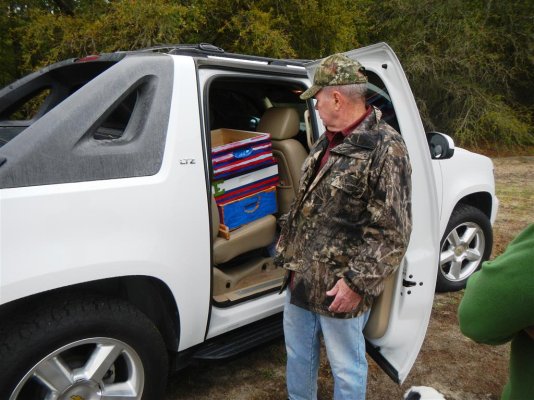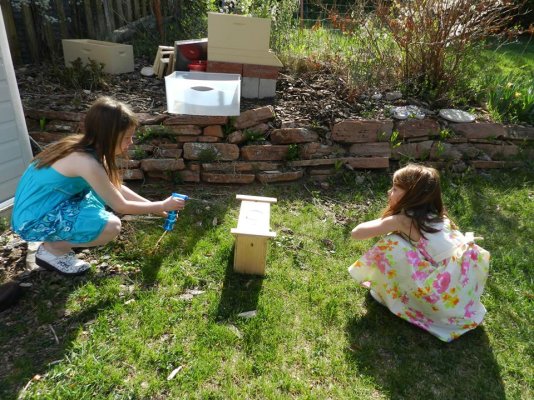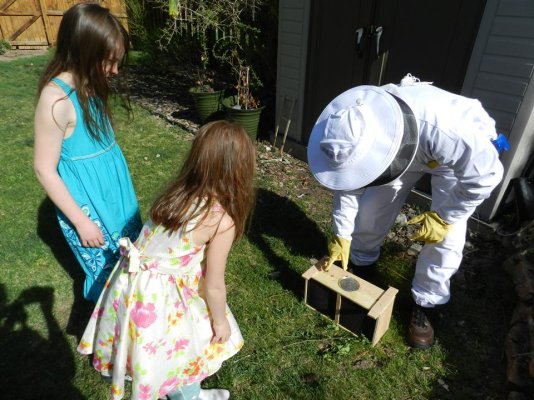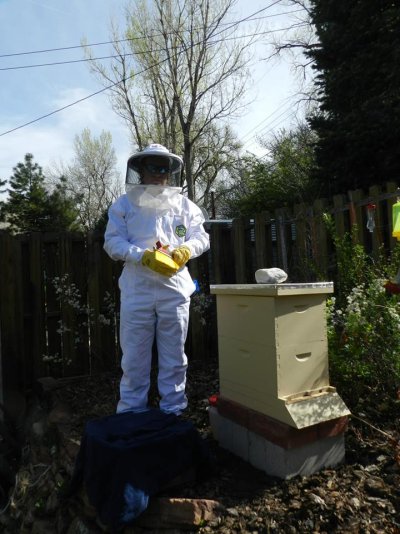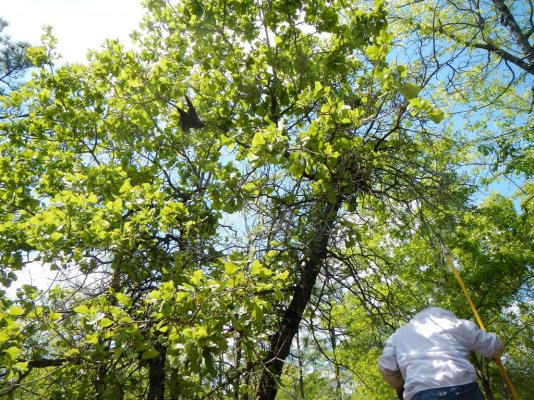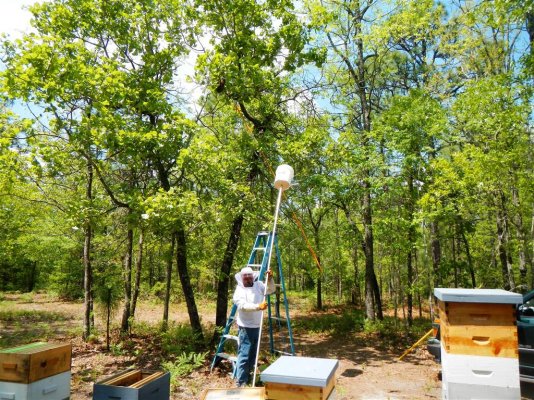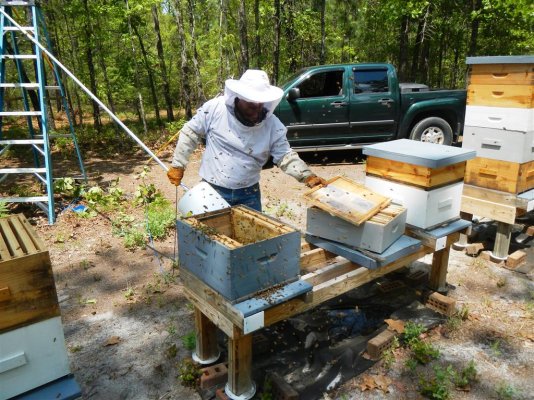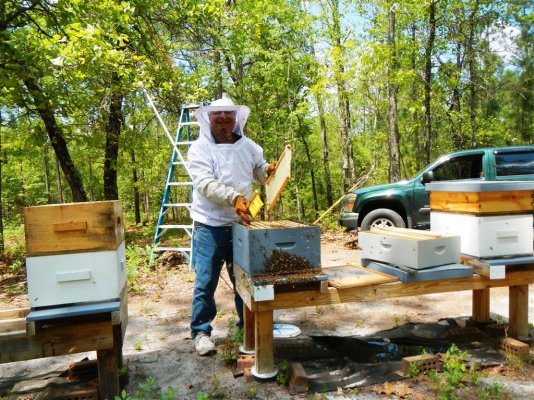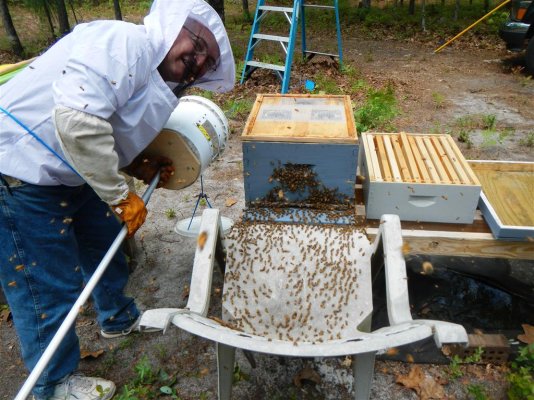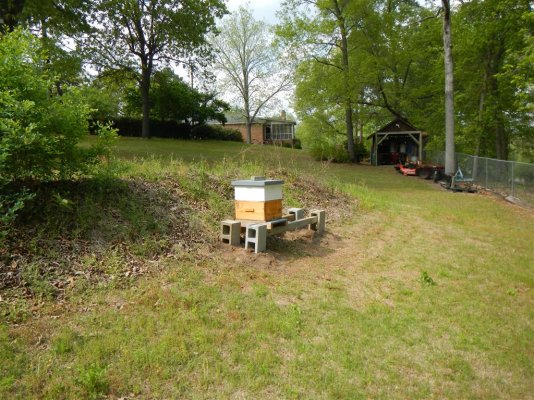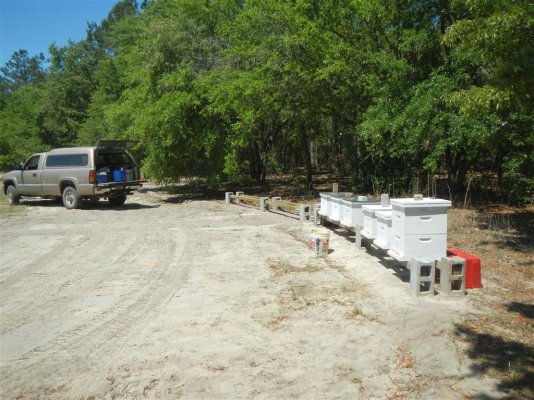bamsphd
Recycles dryer sheets
- Joined
- Nov 25, 2005
- Messages
- 337
I've often wondered...how it is possible to get stung while still wearing the full bee suit?
In this case while squatting to pickup a hive body my chin and neck pushed against the mesh which usually hangs in front of but not touching my face. I believe two bees got me through the mesh.
You sometimes get a "partial" sting through some normally loose fabric pulled tight against your body, though as soon as the fabric moves it usually pulls the stinger out. Bees often sting my gloves, and occasionally the stinger makes it through. If you don't cinch up hand and foot openings they can get into the suit that way.
My first few stings were actually bees which landed on my suit and rode it into the house. Then they stung me when I took the suit off inside the house! I quickly bought a bee brush specifically for brushing bees off the outside of my suit before going inside.
Understand that how defensive bees are depends partly on bee genetics, the so called "killer bees" are extremely defensive while most bee keepers use much more mellow bee strains. How defensive the bees are also depends heavily on the availability of nectar and the state of the hive. It also depends on what you are doing to the hive. If you are smooth, the bees will be more mellow. If you bang or drop parts of the hive, or smash bees, the bees will get more upset. Reassembling hives at the end of the fall with minimal nectar flow and the hives literally knocked over and scattered around by a bear the night before is about as bad as it ever gets. There were also twelve hives involved in this case, so I was dealing with LOTS of angry bees, and I was not using any smoke. During a nectar flow, opening a healthy mellow hive with smoke you might only have a few guard bees trying to warn you off. Knock the hive over and you will have more than a few. Leave the hive open and exposed for hours, and you will encounter quite a few guard bees.
Suits also vary considerably in quality and design philosophy. They also get old, dirty, and torn which can effect how well they work. I'm a wimp and an amateur, so I bought a good suit which barely fit, and then an even better very good suit which was easy to get on and off (Golden Bee Products). The professionals often work with just a veil, long sleeves, and long pants. Though they usually cinch or tuck their pant legs into boots to prevent bees from crawling up inside the pants.
As I understand it, if you are stung about 20 (I'm not sure I'm remembering the right number) times a year, and you are not allergic to bee stings, most people develop a tolerance to the stings. The initial sting still hurts, but you no longer have the swelling and itching reaction of someone who rarely gets stung. As an amateur, I did not want to get stung 20 times a year. For a professional normally working bees with just a veil and no gloves, getting stung more than 20 times a year would be just part of the job.

